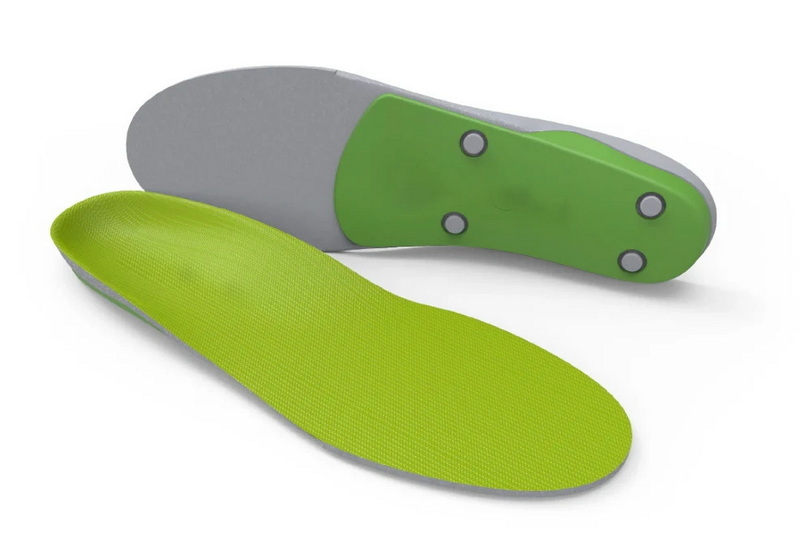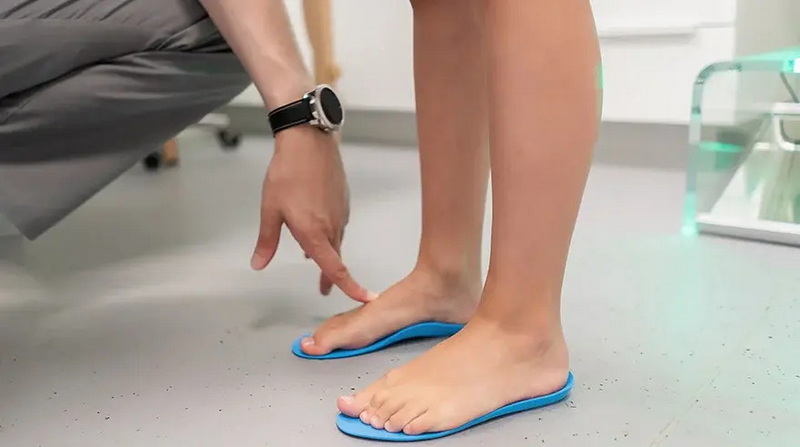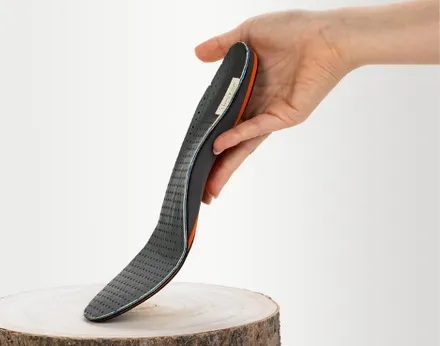Views: 222 Author: Edvo Publish Time: 2025-11-15 Origin: Site











Content Menu
>> The Role of Orthotic Inserts in Daily Life
● Anthem Blue Cross: An Overview
● Are Orthotic Inserts Covered by Anthem Blue Cross?
>> Medical Necessity: The Key Requirement
>> Prescription Requirement and Specialist Assessment
>> Preauthorization and Network Considerations
● The Benefits of Properly Fitted Orthotic Inserts
● How Orthotic Inserts Are Made
● Navigating Anthem Blue Cross Coverage: Step-by-Step
● Maximizing Your Benefits: Practical Advice
● The Future of Orthotic Care and Insurance
>> 1. Are over-the-counter orthotic inserts ever covered?
>> 2. Do I always need a prescription?
>> 3. What if I forget preauthorization?
>> 4. How often can I get replacements?
>> 5. Are children's orthotics covered by Anthem Blue Cross?
Orthotic inserts have become increasingly essential in today's health-conscious world. Designed to provide targeted support, correct biomechanical misalignments, and relieve pain stemming from foot, leg, or back issues, orthotic inserts are valuable for athletes, active professionals, seniors, and anyone struggling with discomfort from daily activities or chronic health conditions. As these products gain wider use, many patients wonder: are orthotic inserts covered by Anthem Blue Cross?
Understanding your health insurance benefits can make a significant difference in your treatment journey, saving you time, money, and frustration. This detailed guide explores the scope of orthotic insert coverage under Anthem Blue Cross, explains the key difference between custom and over-the-counter options, and provides a clear roadmap for maximizing insurance benefits. The article also addresses common pitfalls and frequently asked questions to help you make informed decisions for yourself or your family.

Orthotic inserts are specially designed insoles that are placed in your shoes to support and align the feet. They address a variety of biomechanical issues by redistributing weight, correcting posture, and reducing abnormal foot movement. Orthotic inserts can help manage pain from conditions such as plantar fasciitis, flat feet, high arches, arthritis, diabetes-related nerve pain, and common sports injuries.
Orthotics come in several forms, each intended for a particular purpose:
- Rigid Orthotics: These are primarily designed to control motion in the major foot joints. They are very durable, usually crafted from plastic or carbon fiber, and are commonly recommended for people who need extensive arch support or correction due to walking abnormalities.
- Soft Orthotics: Made from soft, compressible materials, these provide shock absorption and cushioning. They are often prescribed for individuals with diabetic foot ulcers or arthritis to minimize pressure and discomfort.
- Custom Orthotics: Custom inserts are designed and fabricated to precisely fit the unique contours of a patient's foot based on a doctor's prescription and a specialized assessment. They address specific health issues and can be far more effective than generic, store-bought solutions.
The right orthotic insert does more than offer comfort. By adjusting how the foot strikes the ground, orthotic inserts can correct imbalances, prevent overuse injuries, reduce the risk of recurrence, and even alleviate pain in the knees, hips, or lower back. For athletes, orthotics can promote better performance and quicker recovery. For workers on their feet all day, they can mean the difference between daily pain and renewed vitality.
Anthem Blue Cross is one of America's most recognized health insurance providers, serving millions of members through various plan types. The company is known for its customizable coverage, comprehensive provider network, and evolving benefit options. Anthem offers employer-sponsored plans, individual and family plans, and a range of Medicaid and Medicare solutions. However, specific benefits, including orthotic insert coverage, may vary greatly depending on state laws, employer choices, and individual plan design.
- Employer-sponsored plans: These are the most common and vary based on negotiated benefits. Large employers may offer more generous DME (durable medical equipment) allowances, potentially including custom orthotic inserts.
- Individual and Family plans: Coverage for orthotics varies, but most follow strict definitions of “medical necessity.”
- Medicare and Medicaid: Coverage typically follows federal and state guidelines, focusing on advanced needs, such as orthotics required for diabetic foot disease or post-surgical care.
Knowing your plan type and the details of your coverage is the first step in determining if your orthotic inserts will be paid for.
The answer hinges on several critical factors. Generally, Anthem Blue Cross covers custom-molded orthotic inserts when they are medically necessary and prescribed by qualified healthcare professionals. Coverage for generic or over-the-counter inserts is rare and only occurs under very specific circumstances.
Medical necessity forms the backbone of most health insurance coverage decisions. For Anthem Blue Cross, orthotic inserts must be prescribed to correct, improve, or prevent a diagnosed medical condition. This could mean foot deformities, injuries, severe flat foot, or complications from diabetes. A detailed diagnosis and clear documentation from a podiatrist, orthopedist, or primary care doctor are needed to justify coverage.
To satisfy the requirements of most Anthem Blue Cross plans, you'll need a thorough examination and prescription. This involves:
- An in-office physical assessment by a qualified provider.
- Documentation of symptoms, physical findings (such as gait abnormalities or deformity), and prior treatments attempted.
- A written prescription specifying the type of orthotic insert required and the medical reason for its necessity.
Depending on your state and policy, Anthem may require preauthorization—a formal approval process completed before you order or purchase your orthotic inserts. Moreover, you should be sure to see an in-network provider and use approved suppliers to avoid higher out-of-pocket costs. Claims made for orthotic inserts sourced outside the network or without required prior approval are often denied or reimbursed at a lower rate.
Most Anthem Blue Cross plans cover:
- Custom-molded foot orthotics designed from molds or digital scans taken of your foot
- Device adjustment or replacement if medically justified
- Evaluation and fitting appointments, if billed appropriately
However, over-the-counter orthotics or non-prescriptive devices—like those purchased from a retail store—are typically excluded unless there is an explicit plan exception.

To avoid mistakes and delays, follow these steps:
1. Review Plan Documents: Log in to your Anthem Blue Cross account online or review your plan booklet for DME and orthotic insert coverage under “Benefits” or “Member Services.”
2. Contact Member Services: Dial the customer service number on the back of your insurance card and ask about coverage for “custom foot orthotics.” Make sure to get information on necessary pre-approvals, required paperwork, and contracted providers.
3. See a Qualified Provider: Book an appointment with an in-network podiatrist, orthopedic surgeon, or physical therapist authorized to recommend and prescribe orthotics.
4. Get Proper Documentation: Make sure your provider documents the diagnosis, the symptoms, previous treatments, and the reason why custom orthotics are required. Obtain a prescription and any medical notes that describe the need.
5. Request Preauthorization (If Needed): Submit your documentation and prescription for approval before ordering the device.
6. Purchase Through Approved Channels: Order your inserts through a supplier or provider listed in Anthem's network whenever possible.
7. File Your Claim: Submit invoices, receipts, and all medical documentation if direct billing is not available.
Even with the best intentions, claims can be denied. Watch out for these frequent issues:
- Incomplete Documentation: Submit all required forms, prescriptions, and doctor's notes.
- Out-of-Network Providers: Use only those on Anthem's recommended list to maximize benefits.
- Lack of Medical Necessity: Coverage is not provided for inserts used strictly for comfort or athletic enhancement without a diagnosed medical condition.
- Failure to Preauthorize: Always secure preauthorization if your plan demands it.
- Generic Store Purchases: While tempting for convenience, these are almost never covered.
A well-fitted, custom orthotic insert can change your life. By improving foot position and movement, these devices:
- Alleviate pain from chronic foot or lower limb conditions
- Improve walking and running efficiency
- Correct biomechanical issues that can lead to knee, hip, or back pain
- Provide crucial protection for diabetic patients at risk for ulceration or nerve damage
- Support injury recovery and prevent recurrence
For children, proper orthotic intervention can correct congenital foot deformities and promote healthy development.
Custom orthotics involve a multi-step process to ensure the best fit and function:
1. Clinical Assessment: The healthcare provider assesses gait, anatomical structure, and symptoms through physical examination and sometimes advanced imaging.
2. Impression and Casting: A three-dimensional mold or digital scan is taken of your feet, capturing nuances in structure and pressure points.
3. Fabrication: Skilled technicians manufacture the insert using prescription specifications, chosen materials (plastic, graphite, or foam), and patient-specific needs.
4. Fitting and Adjustment: The device is tested and adjusted as necessary to ensure comfortable, effective support.
High-quality suppliers work closely with doctors and technicians to produce inserts that stand up to daily use and the demanding needs of patients.
Navigating insurance coverage for orthotic inserts can seem daunting, but following a systematic approach increases your chances of success:
- Ask for Coverage Details: Always clarify with Anthem's representative whether your plan treats orthotic inserts as Durable Medical Equipment or has a separate benefit category.
- Gather and Keep Evidence: Save every piece of paperwork—including diagnosis, prescription, forms, purchase receipts, and communications with providers or insurers.
- Follow Timelines: Some plans require claims or authorization requests within strict deadlines after purchasing equipment or seeing a provider.
- Push Back on Denials: If denied coverage, request a written explanation. You have the right to appeal with further documentation or clarification from your doctor.
- Athlete's Story: An avid runner facing chronic Achilles tendon pain worked with an orthopedic specialist to receive a diagnosis and prescription for a custom orthotic. With full documentation submitted and a preauthorization secured, Anthem Blue Cross covered both the device and fitting appointments.
- Parent's Dilemma: Parents of a child struggling with flat feet secured coverage for custom orthotics after obtaining a pediatrician's referral and working through Anthem's appeals process, demonstrating medical necessity and potential developmental benefit.
- Professional Pitfall: A nurse purchased retail arch supports without medical evaluation. Anthem Blue Cross denied the claim, citing lack of diagnosis, prescription, and purchase from a qualified supplier.
Each scenario demonstrates the importance of preparation, documentation, and following the provider-insurer partnership process.
To ensure you get the greatest value from your insurance:
- Consult a Specialist Early: The sooner you see a podiatrist or orthopedic doctor, the more streamlined your case will be.
- Document Symptoms Thoroughly: Note all symptoms, duration, and the impact on your life to support medical necessity.
- Know Your Plan: Differences exist even within the same insurer. Review your summary of benefits annually and after any major life event (such as a job change or new diagnosis).
- Keep Detailed Records: Organized paperwork speeds up reimbursement and simplifies appeals.
- Explore Related Benefits: Some plans offer physical therapy, follow-up visits, or replacement inserts after a certain period.
Advances in digital technology are transforming how custom orthotics are designed and manufactured. 3D scanning and printing allow for faster, more accurate production, potentially lowering costs and improving coverage options. Insurers like Anthem Blue Cross continually update policies in response to medical evidence and new technology. Staying informed about these changes ensures you can take advantage of the latest benefits and products.
Custom orthotic inserts are a powerful medical solution for a range of foot and biomechanical conditions. Anthem Blue Cross insurance can provide valuable financial support for eligible patients, but success depends on clear medical necessity, careful documentation, following network and authorization requirements, and consistent communication with healthcare providers and insurance representatives. Investing the time to understand your plan, securing a prescription, and working with in-network professionals empowers you to access essential care and significantly improve your quality of life.

Usually, over-the-counter inserts are not covered by Anthem Blue Cross. Coverage is primarily reserved for custom devices prescribed for specific medical conditions.
Yes, a prescription from a qualified healthcare provider is generally required for custom orthotics to be covered under your health plan.
If preauthorization is required and not obtained, your claim is likely to be denied. Always confirm whether your policy demands prior approval before purchasing inserts.
Replacement orthotic inserts may be covered when medically justified, such as significant wear or changes in foot structure or health status. Review your plan's guidelines for specific frequency limits.
With appropriate diagnosis and documentation of medical need, custom orthotic inserts for children are generally eligible for coverage similar to those for adults.